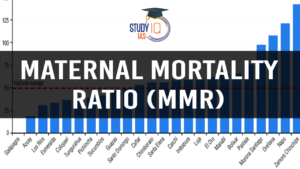Daily Current Affairs for UPSC 2023
Q) Which one of the following statements is not correct?
- Plastic is a synthetic organic polymer made from petroleum.
- Microplastics are small plastic pieces of less than five millimeters in size.
- Plastic persists in the environment for hundreds or even thousands of years.
- India’s per capita plastic consumption is higher than the United States of America.
Daily Current Affairs for UPSC – 22 August April 2023
Explanation:
- Options (1) and (3) are correct: Plastic is a synthetic organic polymer made from petroleum with properties ideally suited for a wide variety of applications, including packaging, building and construction, household, electronics, agriculture etc. It is non-biodegradable in nature and persists in the environment, for hundreds (or even thousands) of years. Plastic pollution is caused by the accumulation of this plastic waste in the environment. It can be categorized as primary plastic wastes such as cigarette butts and bottle caps, or secondary plastic wastes that are formed by the degradation of the primary ones.
- Option (2) is correct: Microplastics are small plastic pieces of less than five millimeters in size.
- Microplastic includes microbeads (solid plastic particles of less than one millimeter in their largest dimension) that are used in cosmetics and personal care products, industrial scrubbers which are used for aggressive blast cleaning, microfibers used in textiles and virgin resin pellets used in plastic manufacturing processes.
- Option (4) is incorrect: India is among the 12 countries responsible for 52% of the world’s mismanaged plastic waste. According to the Central Pollution Control Board (CPCB), India generates close to 26,000 tonnes of plastic a day and over 10,000 tonnes a day of plastic waste remains uncollected. However, India’s per capita plastic consumption of less than 11 kg, is nearly a tenth of the United States of America (109 kg).
Q) With reference to cryosphere, consider the following statements:
- The cryosphere contains more than 90 percent of the world’s freshwater, primarily stored in glaciers, ice caps, and ice sheets.
- The carbon storage in Arctic permafrost is twice as much as the atmosphere contains today.
- The cryosphere is sensitive to the changing climate, especially global warming, due to greenhouse gases.
Which of the statements given above are correct?
- 1 and 2 only
- 1 and 3 only
- 2 and 3 only
- 1, 2 and 3
Explanation:
- Statements 1 is incorrect: The cryosphere refers to the portion of the Earth’s surface and atmosphere that is composed of frozen water. The cryosphere contains approximately 69% of the world’s freshwater, primarily stored in glaciers, ice caps, and ice sheets. Whereas 30% are stored as ground waters and 1% in rivers and lakes. Thus, it plays a crucial role in maintaining global water availability and serves as a primary source of freshwater for drinking, agriculture, and other human activities.
- Statements 2 and 3 are correct: It is estimated that the Arctic permafrost stores twice the carbon in the atmosphere today, amounting to about 1400-1600 billion tons of carbon. Additionally, the amount of carbon stored in permafrost is estimated to be four times greater than the combined amount of CO2 emitted by modern humans. It is well known fact that the cryosphere is sensitive to the changing climate, especially global warming, due to greenhouse gases. The IPCC Special Report on the Ocean and Cryosphere in a Changing Climate states that “over the last decades, global warming has led to widespread shrinking of the cryosphere”.
Q) Consider the following statements about PM-DevINE Scheme:
- It is a Central Sector Scheme with 100% central government funding.
- It is concerned with funding infrastructure and social development projects in all the Border States of India.
- The scheme will be implemented by Ministry of Home Affairs.
How many of the statements given above are correct?
- Only one
- Only two
- All three
- None
Explanation:
- Statement 1 is correct but Statement 3 is incorrect: It is a Central Sector Scheme with 100% central funding. It will be implemented by Ministry of Development of Northeastern Region (DoNER).
- Statement 2 is incorrect: PM-DevINE is aimed at rapid and holistic development of the North- East Region by funding infrastructure and social development projects, based on felt needs of the States. Under ‘PM-DevINE’, all eight North Eastern Indian states, including Arunachal Pradesh, Assam, Manipur, Meghalaya, Mizoram, Nagaland, Sikkim, and Tripura will be covered. The objectives of PM-DevINE are as follows:
- To Fund infrastructure convergently, in the spirit of PM GatiShakti.
- To Support social development projects based on felt needs of the North East.
- To Enable livelihood activities for youth and women.
- To Fill the development gaps in various sectors
Q) Consider the following statements about Debt-for-Nature Swap Deal:
- The notion of debt-for-nature swaps was first mooted by Asian Development Bank after Asian financial crisis of 1997.
- It allows reducing a developing country’s debt burden in exchange for commitments to invest in biodiversity conservation and environmental policy measures.
Which of the statements given above is/are correct?
- 1 only
- 2 only
- Both 1 and 2
- Neither 1 nor 2
Explanation:
- Statement 1 is incorrect: The notion of debt-for-nature swaps was first mooted in 1984 by Thomas Lovejoy, the former vice-president for science at the World Wildlife Fund-US, in response to the Latin American debt crisis.
- Statement 2 is correct: Debt-for-nature swaps allow heavily indebted developing countries to seek help from financial institutions in the developed world with paying off their debt if they agree to spend on conservation of natural resources. Usually banks in developed countries buy the debts of such counties and replace them with new loans which mature later. These have lower interest rates. In 2021, the global financial crisis induced by the COVID-19 pandemic creates a singular opportunity for debt restructuring with a focus on environmental preservation and climate resilience.
Q) Consider the following statements about Demon Particle?
- It is a “composite” particle made up of a combination of electrons, in a solid, with no mass and no electric charge.
- It can be used to super-dense light-weight material for space exploration.
Which of the statements given above is/are correct?
- 1 only
- 2 only
- Both 1 and 2
- Neither 1 nor 2
Explanation:
- Statement 1 is correct: In 1956, theoretical physicist David Pines predicted the existence of a composite particle in solids that would have no mass, no electric charge, and wouldn’t interact with light. He then gave it the name of demon particle. This name was chosen because the properties of demon particle seemed to defy the conventional understanding, much like a mythical or supernatural entity. Hence, it could be said that demon particle is not a particle in the traditional sense like a proton or electron. It is a “composite” particle made up of a combination of electrons, in a solid. It can also form plasmons (collective units of electrons) at room temperature, where larger particles wouldn’t typically form plasmons.
- Statement 2 is incorrect: Researchers at the University of Illinois recently discovered a demon particle that could lead to the making of superconductors that can operate in room temperature.


 Maternal Mortality Ratio (MMR), Unexpect...
Maternal Mortality Ratio (MMR), Unexpect...
 Ministry of External Affairs (MEA), Achi...
Ministry of External Affairs (MEA), Achi...




















